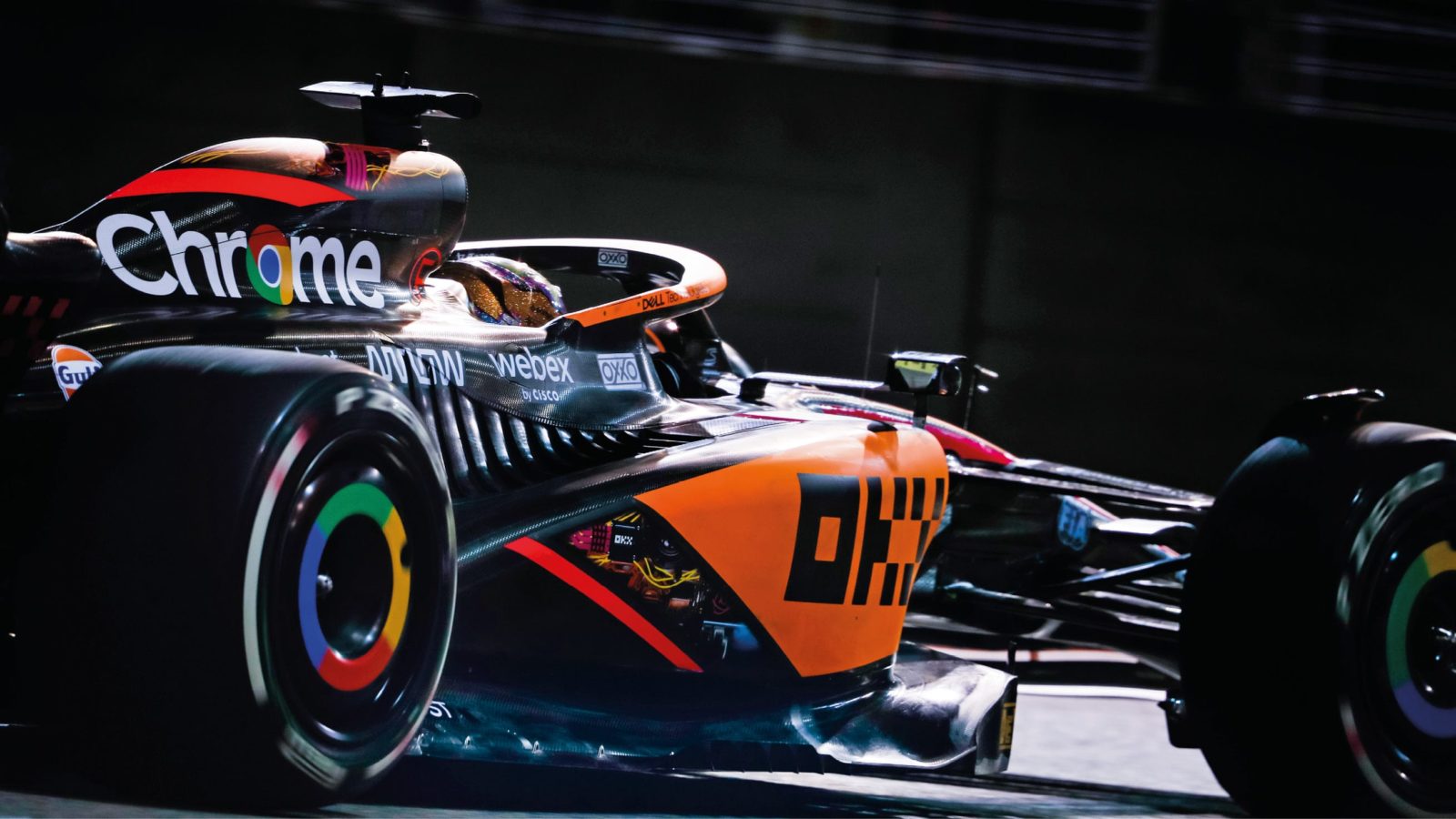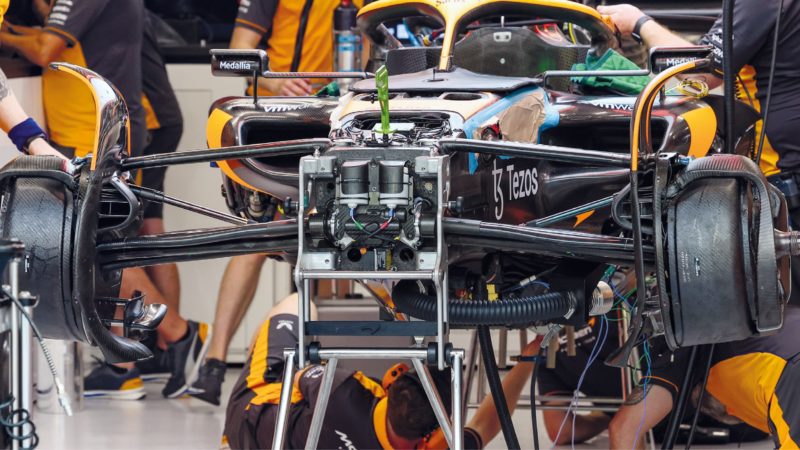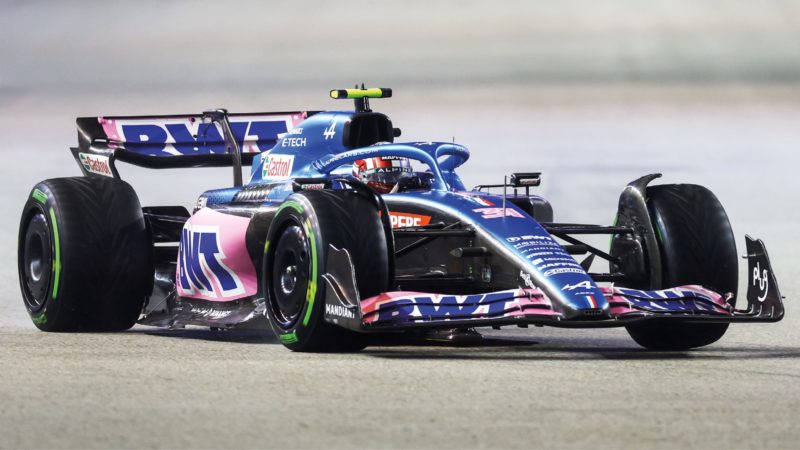Why F1 car floors are the new technical battleground
…It’s what’s underneath that counts. Mark Hughes explains why bottom tweaks can be more cost-effective than a nose job

Even this late in the season teams continue with aero changes. For Singapore McLaren brought a fresh sidepod/floor combination
DPPI
For all that we are towards the end of the season, there is a cost cap in place and although wind tunnels are generally devoted now to the 2023 cars, there has still been a steady flow of new aero development parts arriving on the cars. With the exception of Alfa Romeo, which introduced an all-new front wing in Suzuka, these new parts are invariably changes to the floors.
Under these ground-effect regulations the floor is more powerful than ever and in the first year there still seems to be low-hanging fruit to be found, especially now that there is a fuller appreciation of how it is the downforce created when the ride height is not at its lowest which is the most crucial to lap time.
Also, floor development is much cheaper than front wing development, a very important consideration in the cost cap era. Alpine’s chief technical officer Pat Fry explained earlier in the season the choices facing teams in identifying areas of aero development: “A front wing is the most expensive aero development part. If you replace the whole wing, you’re up to €100,000. So you think twice about whether a modification is worthwhile. If a new profile in one part of the floor brings you more benefit, you’d go for the floor. The predicted improvement in the lap time is calculated against the costs. We get back a factor of 10 more on the floor than on the wings.”

McLaren’s sidepod and floor changes aim to reduce the difference between maximum and average downforce as ride height varies
DPPI
In their fight for fourth in the constructors’ championship, Alpine and McLaren both brought significant car upgrades to Singapore. Alpine’s was far less visually obvious than McLaren’s, as it was all about a redesign of the underfloor ridges whereas McLaren’s involved very different new bodywork around the sidepod radiator inlets. But even the McLaren’s upper bodywork changes were to work in conjunction with a new floor.
“The bits you can’t actually see are some of the most effective parts,” said McLaren’s technical director James Key. “There’s a lot of detail developing in the underfloor now.”
The Alpine upgrade proved much more effective. “It’s one of the best upgrades we’ve ever brought,” said the team’s sporting director Alan Permane in Suzuka. “This is version four of our floor [this season]. This was always planned as an upgrade for Singapore, but it was just double what we thought it was going to be.”
The new underfloor ridges and revised floor edge geometry have given the aerodynamicists much better vortex control of the underfloor, to the tune of around 0.4sec of lap time. In Suzuka Esteban Ocon’s fifth-fastest time in qualifying was within 0.9% of pole, the closest the car has been all season in the dry and over 0.5% closer than the car’s seasonal average.
“At the moment we are very confident of our correlation,” says the team’s technical director Matt Harman, “and that allows us to keep developing the car through to the end of the season. Without necessarily the need for the wind tunnel, which is now needed more for the 2023 car.”

Alpine’s upgrades at Singapore were mostly confined to the underfloor, yet brought significant, and surprising, improvement
Getty Images
That lap of Ocon’s at Suzuka was around 0.3sec faster than the best McLaren lap, from Lando Norris. McLaren’s upgrade was seeking to get a better underfloor airflow at the rear corner of the car. The underfloor creates a low pressure beneath the car, the upper bodywork a high pressure. The difference between those pressures is measured as downforce. The complicating factor is that at different speeds the car sees different rear ride heights. How much of the downforce is retained as the rear ride height increases as the car slows down can be much more valuable to lap time than the peak downforce created by the car at lowest ride height. McLaren’s changes were all about trying to improve the downforce spread between low speed and high.
“The bits you can’t see are some of the most effective parts”
To this end, complementing the changes made to its underfloor design McLaren has sought to improve the airflow feed to the rear corner from the upper bodywork surfaces. The downward ramp of the sidepod has been increased in angle to help accomplish this, but this has necessitated a slight re-arrangement of the radiators within the sidepod. Siting them slightly more vertically has allowed them to begin further back which in turn has allowed the top bodywork around the radiator inlet to be pared back. This should all enhance the speed of flow over the sidepod ramp as it makes its way down to the gap between the rear wheels and diffuser, thereby supporting the airflow exiting the underfloor.
It’s a complete redesign of the whole floor/sidepod area which works as one. As part of that, the leading edge of the floor, the inlet vanes at the beginning of the tunnels and the details of the floor edges have been modified to work in conjunction with the new underfloor. “There are lots of surfaces and things that don’t look logical when you think about the basics of ground effect,” says Key, “but actually make the differences.” This refers to the distinction between peak downforce and that retained at higher ride heights.
Given the scope of McLaren’s upgrade it’s perhaps not surprising that it’s taking longer to extract its full potential than the simpler, more targeted upgrade of the Alpine’s floor.

